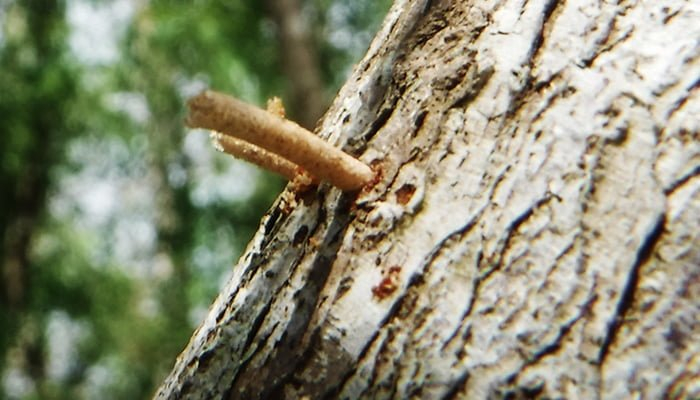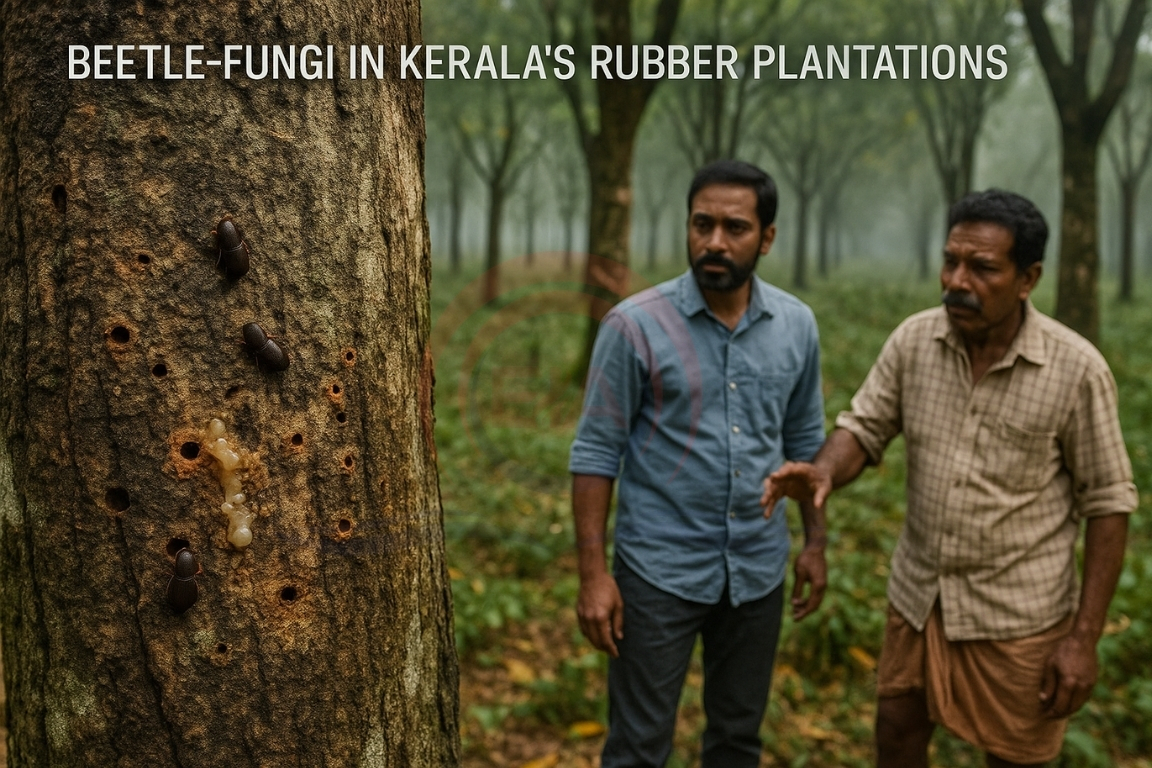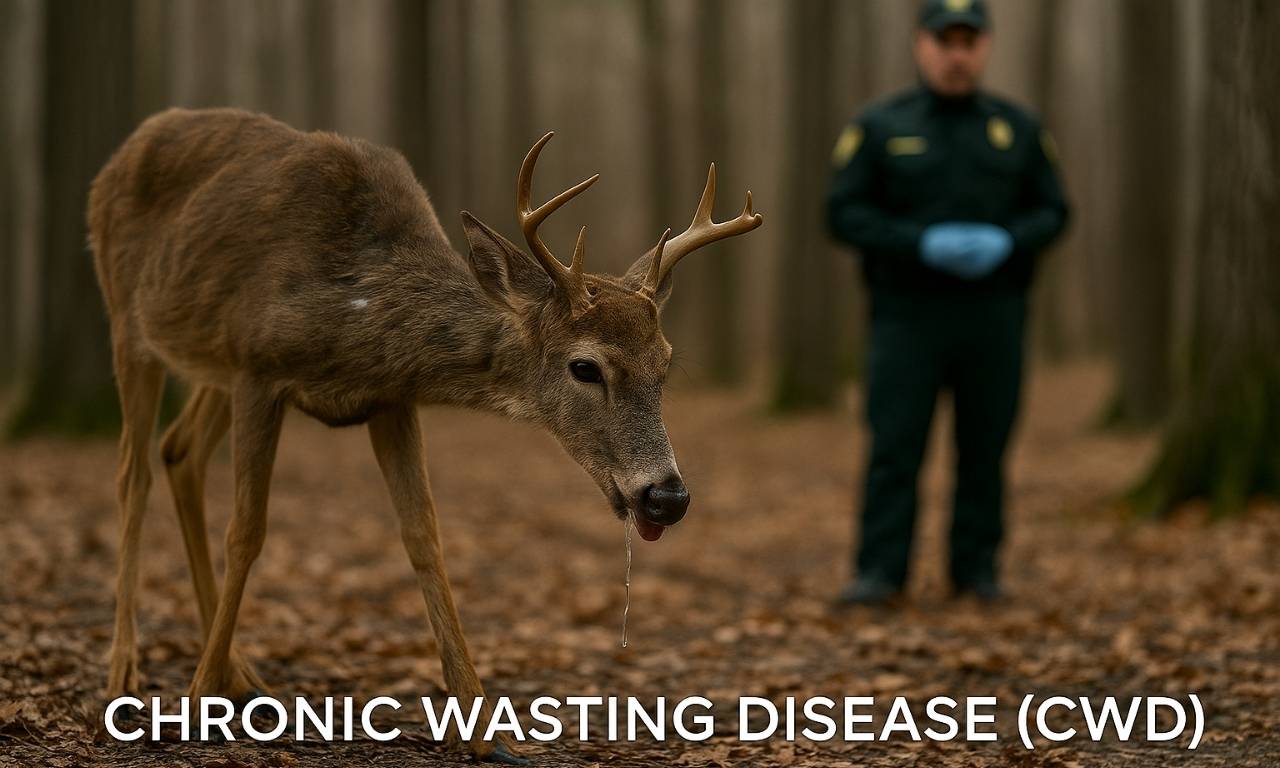Rubber plantations in Kerala, which account for 90% of India’s rubber production, are under serious threat due to an invasive beetle-fungus complex that weakens trees, reduces latex yield, and risks broader ecological and economic damage.
The Invasive Species
- Identified species: Ambrosia beetle (Euplatypus parallelus).
- Native to Central and South America; first seen in India (Goa, 2012).
- Carries fungi: Fusarium ambrosia and Fusarium solani (first time reported together in India).
Mechanism of Attack
- Beetles bore into stressed or dying trees and create tunnels (“galleries”).
- Fungi are deposited inside; they grow and digest the wood.
- Beetles feed on the fungi (not the wood), forming a mutualistic relationship.
- The fungi block the tree’s xylem vessels, causing leaf fall, drying, and sometimes tree death.
Wider Impacts
- Can affect over 80 types of broadleaf trees: cashew, teak, coconut, mango, and coffee.
- Fusarium fungi are opportunistic pathogens, harmful to humans, animals, and ecosystems.
- Spread is hard to contain once fungi infect the tree’s vascular system.

Current Challenges
- Lack of effective treatment; fungicides often don’t reach deep enough.
- Healing is slow once infection sets in.
- Few management strategies exist for broadleaf trees like rubber.
Expert Recommendations
- Immediate Action Plan – for monitoring and rapid containment.
- Region-Specific Strategies – tailored to Kerala’s ecosystem.
- Biological Control – such as beneficial fungi and microbial consortia.
- Genetically Modified Rubber Plants – to resist infections.
- Policy Support – for research, awareness, and farmer assistance.
INVASIVE SPECIES
Invasive species are plants, animals, or microbes that are not native to an area and cause harm to the local environment, economy, or health.
Spread
- They usually spread through human activities like trade, travel, or accidental introduction (e.g., via ships, cargo, or ornamental plants).
Harm to Biodiversity
- They outcompete native species for food and space, leading to extinction or decline of local plants and animals.
Examples in India
- Lantana camara (plant) – harms forest ecosystems.
- Water Hyacinth – clogs water bodies and reduces oxygen for fish.
- African Apple Snail – damages paddy crops.
Conclusion:
This beetle-fungus threat could severely harm India’s rubber economy and other vital crops if not controlled. Urgent scientific and policy intervention is essential.





